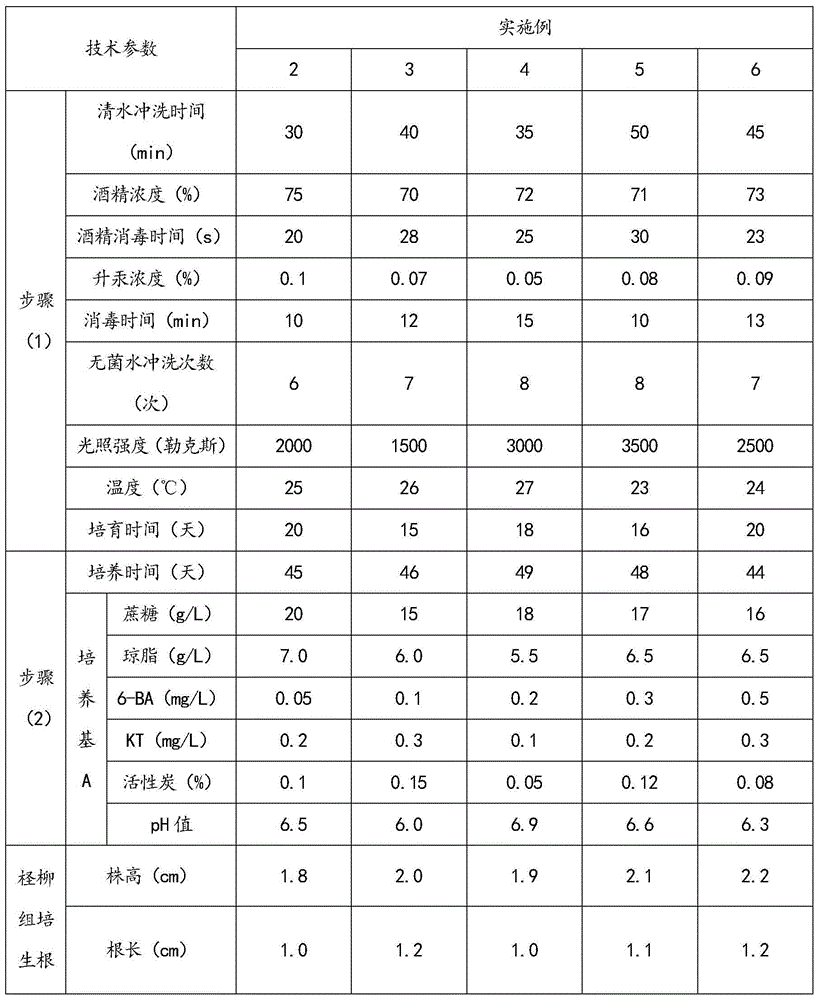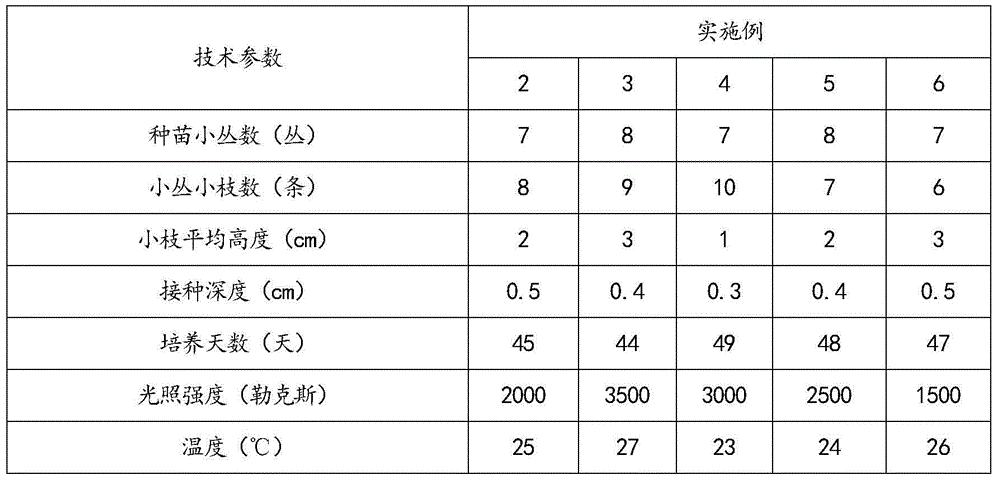Rooting culture method for tamarix chinensis tissue culture seedlings
A technology of rooting culture and tissue culture seedlings, which is applied in the field of plant cultivation, can solve problems such as the influence of proliferation speed and rooting rate, unsuitability for large-scale production, and browning of the base of tissue culture seedlings, so as to shorten the cultivation cycle and reduce material costs , to ensure the effect of genetic traits
- Summary
- Abstract
- Description
- Claims
- Application Information
AI Technical Summary
Problems solved by technology
Method used
Image
Examples
Embodiment 1
[0023] Embodiment 1 A kind of method of Tamarix tissue culture seedling rooting culture
[0024] A method for rooting culture of tamarix tissue cultured seedlings, it is carried out according to the following steps:
[0025] (1) Acquisition of sterile vaccines
[0026] Take new shoots or buds as explants, soak them in washing powder water twice, and then rinse them with water for 30 minutes; then disinfect them with 70% alcohol for 20 seconds, rinse them twice with sterile water, and then rinse them with 0.1% mercuric chloride 100ml and Disinfect with 0.05ml Tween-20 for 10 minutes, and finally wash 6 times with sterile water in the ultra-clean workbench to remove the water on the surface of the explants, trim them, and transfer the trimmed explants to medium A for Cultivation, the culture conditions are: light culture for 13 hours, the light intensity is 2000 lux, and the temperature is 25°C; after 20 days of cultivation, the sterile seedlings are obtained;
[0027] (2) Pro...
Embodiment 2-6
[0033] The method that embodiment 2-6 Tamarix tissue culture seedling takes root culture
[0034] Embodiment 2-6 is respectively a kind of method of tamarix tissue culture seedling rooting culture, and the cultivation method of embodiment 1 is similar, and difference only is wherein involved technical parameter and the index of made tamarix tissue culture seedling different, as shown in the table below:
[0035]
[0036]
[0037] The technical parameter of embodiment 2-6 subculture, as shown in the following table:
[0038]
Embodiment 7
[0039] The screening method of embodiment 7 medium A
[0040] Conditional screening has been carried out on medium A. With MS as the base medium, sucrose 20g / L, agar 5.8g / L, and pH adjusted to 6.5, different types of nutrients or additives were added thereto. For the Tamarix group The growth status of the cultured seedlings has obvious differences, especially while reducing the brown matter, the basic requirements of the tissue cultured seedlings (such as plant height, root length and root quantity, etc.) are guaranteed. The specific process is shown in the following table:
[0041]
[0042]
[0043] It can be seen from the above table that after adding activated carbon components, observing the growth of tamarisk tissue culture seedlings, the appearance of brown matter is greatly reduced, and the rooting condition of tissue culture seedlings is good, which meets the requirements for continued subculture and direct greenhouse planting .
PUM
 Login to View More
Login to View More Abstract
Description
Claims
Application Information
 Login to View More
Login to View More - R&D
- Intellectual Property
- Life Sciences
- Materials
- Tech Scout
- Unparalleled Data Quality
- Higher Quality Content
- 60% Fewer Hallucinations
Browse by: Latest US Patents, China's latest patents, Technical Efficacy Thesaurus, Application Domain, Technology Topic, Popular Technical Reports.
© 2025 PatSnap. All rights reserved.Legal|Privacy policy|Modern Slavery Act Transparency Statement|Sitemap|About US| Contact US: help@patsnap.com



